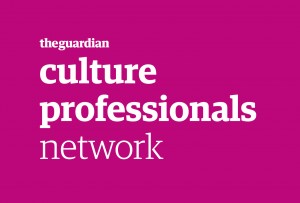As the need for website privacy policies grows, how are arts organizations keeping up? From a sample of 100 nonprofit arts organizations across the United States, this article evaluates how many organizations have accessible privacy policies on their website and why that number should be higher—both to show their dedication to protecting patrons’ personal data privacy and to keep up with changing policy requirements.
UX Design for Accessibility: 6 Steps to WCAG Compliance
The website is a place where participants get to know more about the organization. Designing a webpage that accommodates people with all kinds of different needs is a main step to make the organization accessible. Here are six low-cost, quick web design considerations that any organization can easily employ to improve the website.
How to Diagnose & Fix Your Website
The Metropolitan Museum of Art’s Rebranding & New Identity
Hollywood Stock Exchange: A League of Its Own
First launched in 1996, HSX is a free web-based multiplayer gaming simulator of American film industry. The rules are simple: players use virtual currency to buy, sell, short and cover “shares” of films, directors, actors and other related virtual securities. Although the exchange is entirely fictional, it reacts to actual industry-related news, making itself a community and information hub for both professionals and enthusiasts in the film industry.
Brave New World: Symphony Orchestras & Online Experiences
Just what is an online audience? How does it differ from an offline audience? How does participating in the arts through electronic media and online channels relate to the attendance of arts events? Moreover, exactly what (and how) are symphony orchestras using these digital technologies to engage with individuals around the world?
What Can We Learn? Part 3: Charity: water
So far in this series, we've examined some of the strategies that non-arts nonprofits are using to engage and promote participation among their constituents, as well as their implications for success in the arts. To wrap up, we'll look at Charity: water, a nonprofit that aims to bring clean and safe drinking water to the 800 million people in developing nations who do not have access to it yet. Charity: water operates with a distinctive funding model: 100 percent of public contributions are used to directly fund mission-based projects, while operating costs are funded by other sources such as foundations and private donors.
What Can We Learn? Part 2: Public Radio
A while back we examined some of the creative ways in which the Nature Conservancy uses its web presence to promote engagement with its constituents. The arts and our public radio comrades have much in common with regard to audience development and engagement challenges. In the spirit of pledge drive season, we'll take a look at what regional public radio institutions are doing online to create a stronger sense of community and participation, even without the benefit of a physical space.
What Can We Learn? Part 1: The Nature Conservancy
In the arts, it's only natural to look to peer organizations in our field for gathering new ideas and benchmarking our success. However, there are countless technology and engagement lessons we can learn from institutions unrelated to the not-for-profit arts sector. Over the next few weeks, we'll be looking at creative web engagement strategies used by such institutions that can serve as inspiration for the arts industry.
Modern Website Design: The Rijksmuseum
What art museums do you know with great websites? The Walker Art Center? MoMA? Can you name any that do not focus on contemporary or modern collections?
Spoiler alert: I can - the Rijksmuseum.Yes, I am on a Rijksmuseum kick.
In honor of the Rijksmuseum’s gorgeous restoration, let’s talk about how an art museum with an extensive traditional collection can successfully leverage good website design. I would argue that a contemporary or modern collection is not a prerequisite for an engaging website.
A Digital Art Collection: LACMA and the Rijksmuseum
There’s something neat about looking at your favorite work of art online. Services like the Google Art Project and Painting Portal allow users to view a multitude of works from around the world. You can zoom in way closer than you’d ever be allowed to be in a museum. You can return to the images online whenever you want, without paying an entry fee. And the latest trend we’re seeing, you can download the images for whatever you want.
So You Want to Be a Mobile Optimization Star?: 4 Lessons from the Kennedy Center
Focusing your resources on a great mobile website can often be a more cost-effective route than creating an app. The Kennedy Center demonstrates the full potential of a mobile-optimized website with an efficient interface designed with patron usability in mind. As long as mobile tech remains a relatively new outlet for reaching our constituents, there are countless things we can learn from their example, but here are 4 to get you started:
To App or Not to App: That is the Question
Arts marketing and communications blogger Marc van Bree (aka Dutch Perspective) proposes that apps may not always be an ideal mobile option for arts organizations. Studies comparing web browsing and mobile apps are inconclusive regarding projected user popularity in coming years, leaving organizations with multiple possibilities for cultivating their mobile presence.
Crowd-Sourced Curating at the Brooklyn Museum
As the arts world continues to discuss and reconsider what it means to participate in the arts, the Brooklyn Museum is testing a new construct of audience engagement with its current exhibit GO: A Community-Curated Open Studio Project. GO combines two existing tactics: inviting the public into studios of working artists to see where and how artwork is made, and crowdsourcing the selection of that artwork through an open voting process. Unlike ArtPrize, an art competition in Grand Rapids, MI, that awards cash prizes to artists as determined by public vote (juried awards were added in 2012) and cited by the Brooklyn Museum as inspiration for the current exhibit, GO asks participants to nominate artists—rather than specific pieces—whose work they would like to see exhibited at the museum. The catch is that to be eligible to vote, participants must first visit at least five artist studios, which in turn requires that the museum be able to track where people go. The answer is a multiphase project begun this past September and culminating in an exhibit of Brooklyn artists, on display through February 24.
To participate, the museum first asked individuals to register on the GO community project website. Then, over a two-day open studio event involving nearly 1,800 artists in 46 Brooklyn neighborhoods, participants “checked-in” at each studio visited by way of a unique number displayed onsite. By sending that number to the museum either by text message, a free custom iPhone app, or the web, participants documented where they traveled. Those who checked-in at five or more studios received an email with instructions on how to vote, having earned the opportunity to nominate up to three artists. The museum tallied the results, sent two of its curators to review the work of the top ten nominated artists, and selected five to exhibit.
But GO didn’t stop when the voting was done. By asking participants to check-in, the museum was able to analyze how many people went where, when, and what platform they used to check-in, all of which was then shared in a series of posts on both the GO blog and through the Statistics section of the GO website. (Among those findings: Despite multiple mobile-friendly options designed especially for the event, nearly half of the 6,100+ participants chose to simply write down studio numbers throughout the day and check-in via the project website once back home, surprising project coordinators.) The website also provided a forum for participants to discuss (in real time and afterward) what they did and did not like about the process, share stories from their studio visits, learn about nominated artists, receive updates on the creation of the exhibit, and provide reactions to the final exhibit itself.
The exhibit has been criticized by some for not aptly representing the rich artistic quality Brooklyn holds, and is generating commentary on the age-old curatorial question of who should decide what constitutes “good” art. While a worthwhile debate, it seems to belie the larger point of the project: to expose people to the creative process, and ideally, to facilitate a better understanding of it. On that score, GO appears to have succeeded mightily. As project coordinators tagged entries in the Shared Stories section of the website, one of the most frequent themes to emerge was that of discovery. It seems that by opening studio doors, inviting people to participate in the curatorial process, and sharing reactions online, GO fostered meaningful interactions among artists, voters, volunteers, and museum staff, and in the process, created an innovative approach to engage audiences in the arts.
As You Consider a Web Page Redesign...
You might do well reading this article on museum website recent redesigns and considering the statistics from a recent patron study. http://www.artsjournal.com/realcleararts/2013/01/museum-websites-are-getting-better-but-i-have-two-pet-peeves.html
SEO Your Location on Mapping Programs
 Locations on maps are subject to the similar search engine optimization algorithms that websites are. Google, and other mapping programs take relevance, type of business, prevalence, tags and other metadata and other factors or order the representation of physical business on any map you call up. Simply claiming your address on Google, Yahoo, Mapquest and other portals is the first step. The algorithm that arranges addresses on any given maps search page takes into consideration over 100 different factors when delivering the results in the order they do. Some you don't have control over and some you do. Here are some suggestions for improving your address in search ranking on maps.
Locations on maps are subject to the similar search engine optimization algorithms that websites are. Google, and other mapping programs take relevance, type of business, prevalence, tags and other metadata and other factors or order the representation of physical business on any map you call up. Simply claiming your address on Google, Yahoo, Mapquest and other portals is the first step. The algorithm that arranges addresses on any given maps search page takes into consideration over 100 different factors when delivering the results in the order they do. Some you don't have control over and some you do. Here are some suggestions for improving your address in search ranking on maps.
- Citations: Linking the URL for the s page directly from other pages, preferably pages that Google and other search engines trust. The more trustworthy sources that list the business address the more the impact will be. Direct URL links to the map of the business should be available on all sites you control: your website, wikipedia page, and social media.
- Reviews: For instance a review of the business location on google will help with optimizing your google results, rinse and repeat for Yelp, etc. (example: if you plug "Georgetown Liquor Co, Seattle" into google maps, the business has 29 reviews). Reviews need to be linked directly to the address you want to be found. Caution: faking reviews can backfire. Most reviews a mixture of positive and negative, fake reviews are pretty obvious.
- User content: Check in on Foursquare, Facebook, Twitter, etc. Of course you need to claim the address listing for the map that the application uses.
In addition to these three things, standard usage of SEO best practices are applicable to mapping. Use names such as 'Map to XYZ Theater Company' rather than 'click here for a map' as your link. To quote a friend, Mark Gerth of the Washington State Arts Alliance (who first turned me on to SEO), 'click here' doesn't need help being found, you do.
If you have additional helpful suggestions for Geo SEO please leave them in the comments!
Three “How to…” Lists, One MuseumNext Conference, and a Letter to Museum Directors on Why Museum Websites Fail
The Guardian’s Culture Professionals Network reveals some of the best advice, best practices, and best tips from the arts management  community.
community.
1) 18 tips for managing your arts and heritage staff
2) How to recognize, prevent and deal with burnout in a creative job
3) 10 social media tips for arts organizations
And now, the international museum conference you must register for early! MuseumNext is Europe’s conference on social and digital media for the museum sector. For the third year in a row, registration to MuseumNext reached capacity long before the two-day conference rolled around this past May. Interested latecomers were placed on a waiting list.
What is the event about?
- Coverage of the hottest topics and technologies from the digital side of museums
- Packed schedule: keynotes, multi-track conference, workshops and more
- World class speakers and fresh perspectives from museums across the globe
- Unbeatable atmosphere: hundreds of museum geeks, networking and meet ups
- Great value: catering throughout the day, rewatch presentations online after the event and free high speed wifi.
This year’s conference was in Barcelona, Spain, with over 350 delegates from 34 countries across the globe. The topic of discussion: what’s next for museums? Speakers on this year's program included Nancy Proctor of the Smithsonian Institution (mobile strategy and revolutionary practices in museums), Tijana Tasich and Elena Villaespesa of the TATE (online metrics), Allegra Burnette of the MoMa (the Mobile Museum), and many other notable and forward-thinking figures in the museum world. To view videos of these lectures, visit MuseumNext's Facebook page.
The MuseumNext website is loaded with hot topics and insightful discussion in the arts management field. To get a feel for the scope of the content discussed, check out these articles:
- Why most museum websites are terrible (at achieving mission)
- What's Your MET?
- Google+ and the Museum
- Social Commerce and the Museum
- and the presentation, Rethinking the Museum for the Digital Age
[embed]http://vimeo.com/25552335[/embed]
The Space: A Summer of English Arts on a New Experimental Platform
This Olympiad summer, the arts in the UK will be consolidated onto a single online platform called The Space. What’s more? The content on The Space is being provided for free! There’s room, or more fittingly, seats for all, at venues such as the World Shakespeare Festival or Yayoi Kusama’s Obliteration Room at the Tate.
“The Space is a new way to access and experience all of the arts – for free.Available on computer, tablet, smartphone and connected TV, The Space invites you to take part in the biggest summer of arts the UK has ever seen, whenever you want it and wherever you happen to be. ”
 The Arts Council England in partnership with the BBC created The Space as a way for people from all over the world to experience the country’s rich and dynamic arts scene. In effect, a summer of English arts to all! (Albeit without the English summer and its cool Constable Skies). So The Space is certainly something to look forward too because it will feature some of the UK’s best theatrical productions, dances, musical performances, art exhibits, poetry readings, along with content that has been specifically created for the platform.
The Arts Council England in partnership with the BBC created The Space as a way for people from all over the world to experience the country’s rich and dynamic arts scene. In effect, a summer of English arts to all! (Albeit without the English summer and its cool Constable Skies). So The Space is certainly something to look forward too because it will feature some of the UK’s best theatrical productions, dances, musical performances, art exhibits, poetry readings, along with content that has been specifically created for the platform.
Through the course of the summer, the performances staged in theatre, dance, film, and music will be showcased via recordings and live streaming while exhibitions at museums and galleries will be presented via behind-the-scenes footage, photographs, and interviews with artists and curators. The Space will also feature experimental and interactive digital art that can be experienced on the platform itself. Finally, for poetry and literature, there will be a variety of formats, including podcasts, poetry readings, and interactive audio-visual timelines such as the 60 Years in 60 Poems.
While live streaming and online exhibits aren’t entirely new to the performing or visual arts, the presentation of all the arts, all at once, and in one place, is certainly a novelty. As such, The Space is truly remarkable because it is no ordinary task to fit an entire country’s arts scene onto a single platform! If other countries too made their arts available on interactive, well designed platforms, the internet would surely be a destination in itself. Perhaps the introduction of The Space suggests that it already is?!
The Space also signals another significant trend; the quality of arts being made available online continues to improve. Whether it is in opera, film, or even, educational art history, we are privy to some great material. At the same time, the problem with the online format is that there are times when our Google searches are less than serendipitous and our social networks less than social. On such days, we miss out on a lot of online events, projects, and experiments.
Yet on The Space, what will remain certain is most certainly the art. And at the end of each adequately sunny day across the Atlantic, the platform will be populated with new content for visitors to see, hear, read, and experience. Moreover, the content on this living library of the arts will be available until October. After that, it will be time, once again, to continue our search for the arts on the virtual infinity of the internet (The outer Space).
Meta Data: What is it and How should it be used
 The way that meta tags and meta data has been used by search engines has changed dramatically over the last dozen years. Meta data, for those who are uninitiated roughly means data about data. Meta tags, in theory, are one of several tools that search engines and other clients use to return results in searches. How much time should you spend on writing meta tags and meta data? For the purposes of organization Meta will be divided into three categories: Keywords, Tags, and Other Meta.
Several articles about the demise of Meta Keywords have been written in the last couple of years. Google announced a while back that they no longer use meta tag keywords. Bing and Yahoo do, however, use keywords as one of several hundred published criteria. Key words are, by most expert assessments, the least valuable of meta data. While they may assist in some search engine optimization, the best way to get your webpages in search engines is to use wording in the body of the email that contains they keywords that you would normally use in meta. How much time should you spend on keywords? Not much. If you are low on time or energy this is the first thing that you should drop.
The way that meta tags and meta data has been used by search engines has changed dramatically over the last dozen years. Meta data, for those who are uninitiated roughly means data about data. Meta tags, in theory, are one of several tools that search engines and other clients use to return results in searches. How much time should you spend on writing meta tags and meta data? For the purposes of organization Meta will be divided into three categories: Keywords, Tags, and Other Meta.
Several articles about the demise of Meta Keywords have been written in the last couple of years. Google announced a while back that they no longer use meta tag keywords. Bing and Yahoo do, however, use keywords as one of several hundred published criteria. Key words are, by most expert assessments, the least valuable of meta data. While they may assist in some search engine optimization, the best way to get your webpages in search engines is to use wording in the body of the email that contains they keywords that you would normally use in meta. How much time should you spend on keywords? Not much. If you are low on time or energy this is the first thing that you should drop.
Tags are also meta data that is used in web searches. They help to categorize your content much in the same way that keywords used to. Google has a great page for usage of these items that tell browsers and search engines what to do with the data that it sees on your web site. You can leave instructions to not index information, not provide alternative descriptions, and not to cache your website. You can also set up links for translation to other languages.
Title and description is essential meta data. If you are using a WYSIWYG editor such as Word Press or Joomla the Title and Description are automatically embedded into your HTML as you fill out the handy fields that are provided to you. The description of any page returned through search is displayed as a snippet in the results. This text is sometimes truncated depending upon the search engine and settings on your computer and the length of the description.
For more information about Meta go to the W3 website. In fact even if you aren't interested in Meta Data you should probably go to the W3 website and familiarize yourself with the content. Anyone who has a website should be aware of W3 and the tools and information available.


















